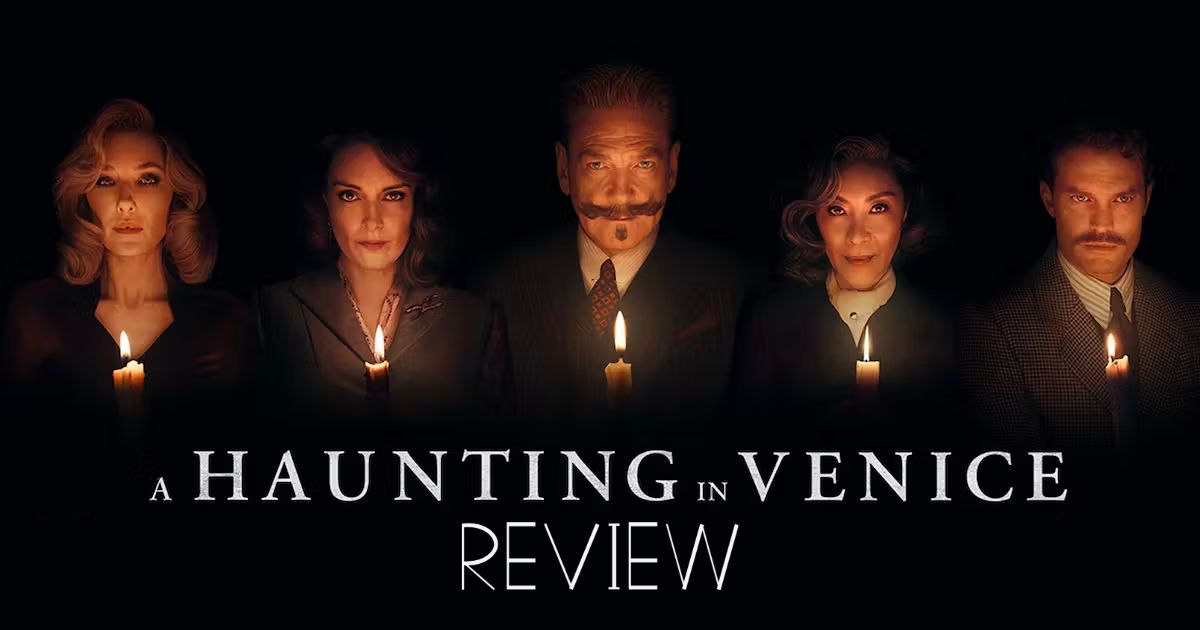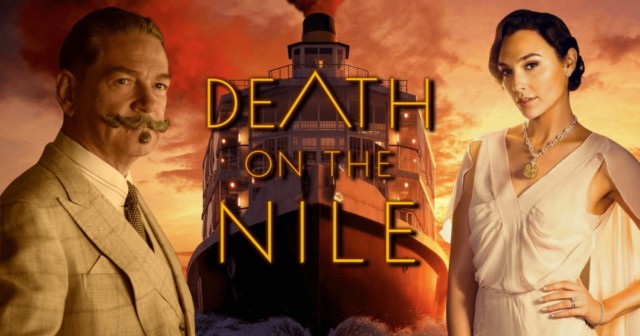Review: ‘A Haunting in Venice’

Director and actor Kenneth Branagh’s passion for the works of Agatha Christie continues with another murder mystery for Hercule Poirot. This time, Branagh takes a swan dive into the supernatural with A Haunting in Venice, an approach he has tried with Mary Shelley’s Frankenstein.
A Haunting in Venice is not a perfect sequel. Some aspects feel slightly undercooked within its screenplay. However, this might be the most engaging of the three films. The sequel offers horror-inspired elements that feel classical in its approach. It’s not exactly aiming to be inventive but is a throwback to the days of Hammer-style films of a bygone era.
A Haunting in Venice and the return of Hercule Poirot
The new sequel sees Hercule Poirot investigate a mysterious medium that allegedly can perform seances. When we find Poirot at the film’s beginning, he is followed and chased everywhere as an icon, mostly because writer Ariadne Oliver (Tina Fey) has taken it upon herself to document Poirot’s incredible experiences solving cases by making him a literary character.
Tracking the retired detective down in Venice, Ariadne suggests he comes to a seance performed by a medium named Joyce Reynolds (Michelle Yeoh), where the alleged spiritual psychic will attempt to communicate with the deceased daughter of an opera singer, Rowena Drake (Kelly Reilly). Her persistence stems from the fact Ariadne sees no trickery in the seance. But Poirot, being a rational man, believes everything mysterious has a sensible explanation.

Attending the seance, Poirot once again finds himself in a sea of shifty characters. There is Leslie Ferrier, a medical expert with PTSD from war trauma (Jamie Dornan), his son Leopold (Jude Hill), two assistants for the psychic medium (played by Emma Laird and Ali Khan), a disgruntled ex-boyfriend of the deceased daughter Alicia named Maxime (Kyle Allen), and a housekeeper and Alicia’s former caretaker Olga (Camille Cottin).
As expected, a murder occurs, and Poirot locks everyone inside the mansion until the murderer is uncovered. In the words of Randy from Scream, “Everybody is a suspect.”
The characters, pacing, and runtime
The movie is a breath of fresh air with a short runtime of around 105 minutes. It’s a nice change from the recent trend of movies over three hours long. However, some characters in this ensemble piece needed more development. Michael Green’s script jumps right into the action without spending much time with each character, so it’s up to the viewer to gather details as the mystery unfolds.
The novelist character portrayed by Tina Fey in the movie is lacking something. The performance could be more seamless because we only see Fey and not the character she plays (Ariadne). If the filmmakers had given more time to develop her role, it might have solved this problem. As it is, her character feels incomplete.
The same issue is noticeable in other supporting characters, such as Maxime, Alicia’s ex-boyfriend, who feels like a one-dimensional character and a plot device used to create misdirection. Or IS it a misdirect? *strokes mustache*. On the other hand, Jamie Dornan’s portrayal of a former soldier dealing with his past is exceptional, and his scenes with Jude Hill, who plays his son, are some of the most poignant moments in the film that explore the movie’s overarching themes.
Adding to the runtime topic is the surprising slow-burn feel of A Haunting in Venice. The movie has long sequences of Poirot interviewing suspects that are necessary but slows the film down at various moments. And at the same time, the plodding approach adds to the atmosphere as we journey through this eerie venue of creaks, shadows, and voices. The pacing might bother some viewers, but it felt more like a feature than a bug for this reviewer.
Atmosphere, story, and themes of ghosts
A Haunting in Venice is the superior of the three films because of its haunting story that is more than just about a possible haunting. Throughout the film, Green’s screenplay uses the spiritual concept as a statement on trauma. Poirot has a tragedy in his past, which is implied previously in Death on the Nile. Jamie Dornan’s character, Dr. Ferrier, is a loose cannon because of his history. Various characters claim to hear voices, mainly of the ghost of the daughter (who allegedly took her own life). Most suspects have ghosts and demons they are fighting in their own way. It might be on the nose, but it’s effective for the film’s purposes.

In this film, the theme of skepticism versus spirituality is weighed and measured throughout the experience. The movie does not take a judgmental stance towards either side of the debate but delves deeply into the topic. As Poirot starts to question reality, viewers are left wondering whether the visions he sees are real or just figments of his imagination. They also ponder whether the sounds Poirot hears in his head are there or simply manifestations of his thoughts. These questions will undoubtedly arise as viewers explore Kenneth Branagh’s sequel.
The film’s cinematographer, Haris Zambarloukos, seemingly drew inspiration from Hammer films when choosing how to shoot the movie. He created suspenseful scenes through the use of shadowy lighting and close-up shots that made the viewer feel trapped. Zambarloukos used camera angles like Dutch angles and fish-eye lenses to add to the unsettling atmosphere. The production design also contributed to the gothic feel of the film with its use of birds and other animals to create jump scares. Someone only needed to shout “Nevermore” to complete the Edgar Allan Poe vibes.
A Haunting in Venice is imperfect but an entertaining ghostly throwback
Kenneth Branagh’s third film in this Agatha Christie-inspired series may not be perfect, but it is undoubtedly his strongest effort. The film is a slow-burn detective story, which may not be for everyone, but what sets it apart is Branagh’s sheer delight while toying with classical suspense and horror concepts. If you didn’t like the first two installments, this one probably won’t sway you, but for fans of this style of movie, plenty of enjoyable moments will evoke fond memories of classic films from the ’50s and ’60s.
My rating for this film:
★★★/ ♥♥♥
A Haunting in Venice is now in theaters! Will you go see it this weekend? Let us know on social media @mycosmiccircus or on The Cosmic Circus Discord.



